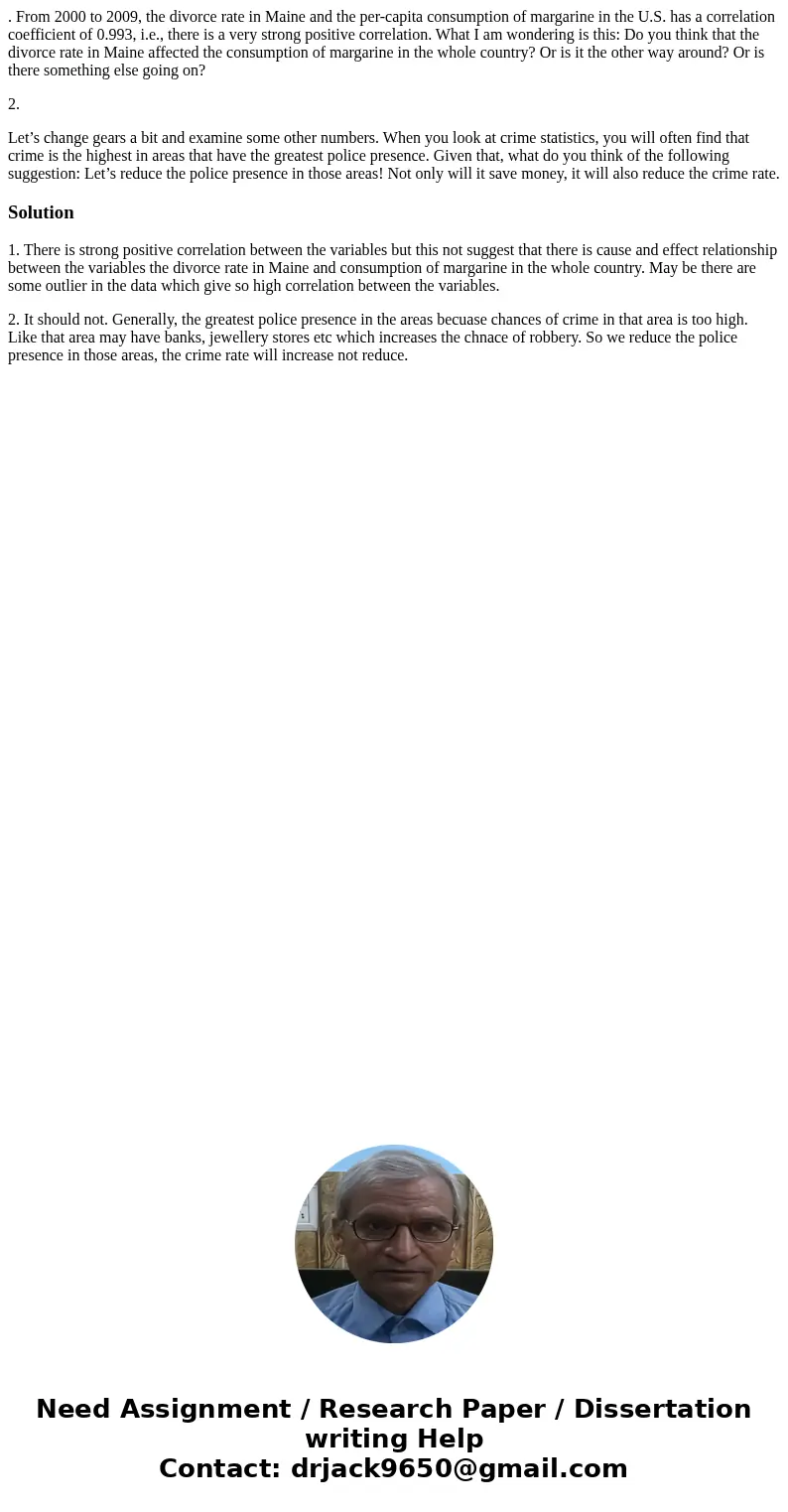From 2000 to 2009 the divorce rate in Maine and the percapi
. From 2000 to 2009, the divorce rate in Maine and the per-capita consumption of margarine in the U.S. has a correlation coefficient of 0.993, i.e., there is a very strong positive correlation. What I am wondering is this: Do you think that the divorce rate in Maine affected the consumption of margarine in the whole country? Or is it the other way around? Or is there something else going on?
2.
Let’s change gears a bit and examine some other numbers. When you look at crime statistics, you will often find that crime is the highest in areas that have the greatest police presence. Given that, what do you think of the following suggestion: Let’s reduce the police presence in those areas! Not only will it save money, it will also reduce the crime rate.
Solution
1. There is strong positive correlation between the variables but this not suggest that there is cause and effect relationship between the variables the divorce rate in Maine and consumption of margarine in the whole country. May be there are some outlier in the data which give so high correlation between the variables.
2. It should not. Generally, the greatest police presence in the areas becuase chances of crime in that area is too high. Like that area may have banks, jewellery stores etc which increases the chnace of robbery. So we reduce the police presence in those areas, the crime rate will increase not reduce.

 Homework Sourse
Homework Sourse